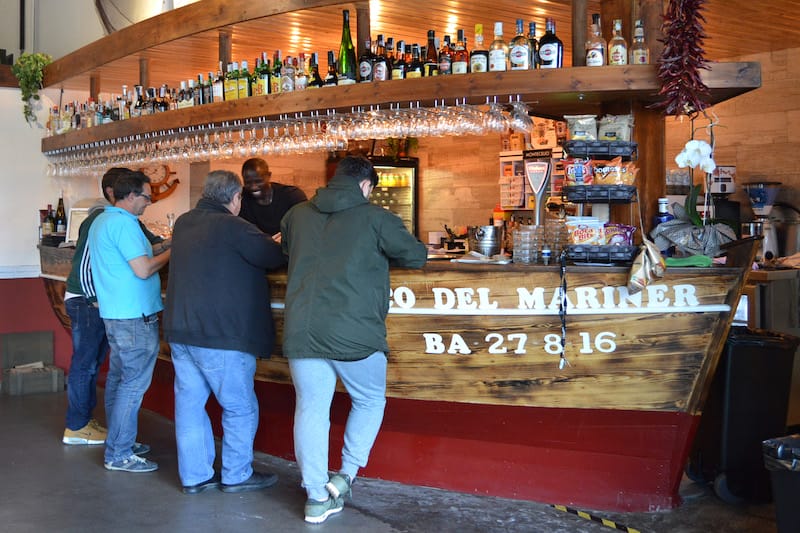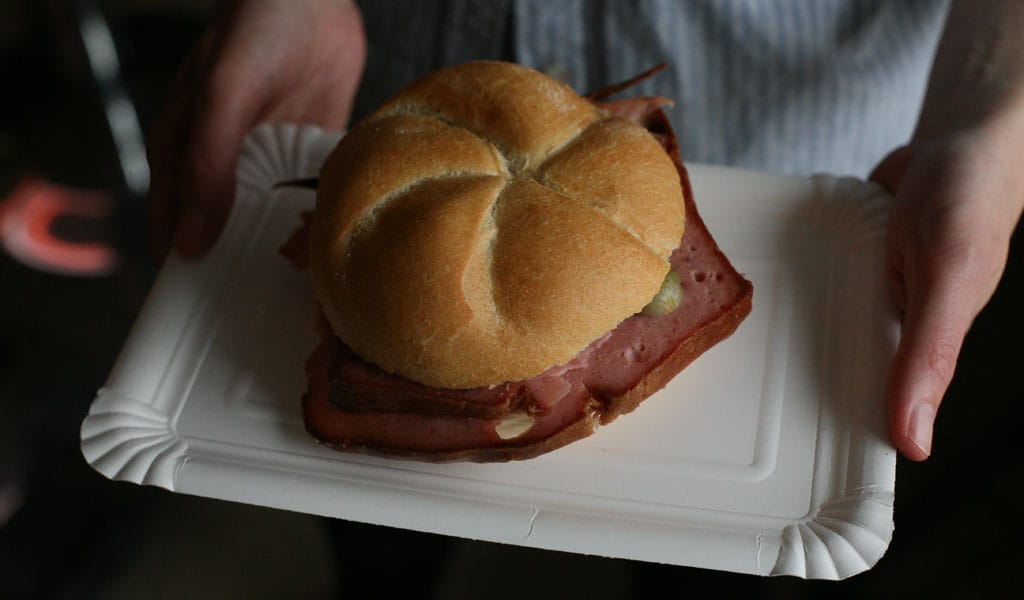Update: Sergi de Meia is sadly no longer open.
This was an intense year for Barcelona, with a complex political situation stemming from Catalonia’s bid for independence from Spain. It was a storm that the culinary scene could not help but get caught up in. Bars and restaurants have always been a temple of leisure and pleasure, but we sometimes forget that they also serve as a space for people to connect and debate. And in the spirit of debate, food and drink constitute another form of expression, an indication of a restaurant’s cultural leanings.
In Barcelona this year, we could taste the continued interest in developing and strengthening Catalan cuisine, often considered an extension of Catalan identity. But we also observed the food scene’s openness to other regional cultures and global influences. What seemed to connect them all was the focus on local food production; some of the city’s best chefs and producers have championed sustainability and quality ingredients. This, thankfully, is a growing trend that can unite Catalans across political lines.
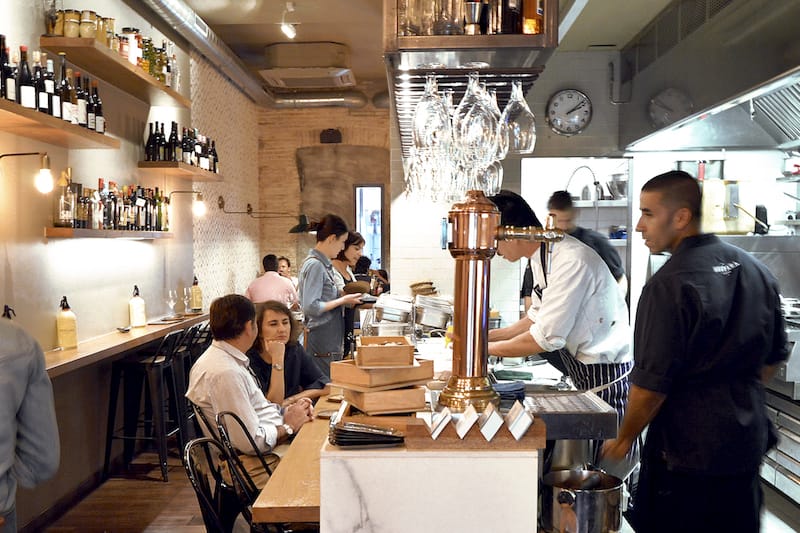
La Mundana
La Mundana is an inspiring center of culinary pleasure, far away from central Barcelona. This new gastronomic vermutería is a small, long bar with a patio, located in the Sants neighborhood. The brainchild of Alain Guiard, a chef with many other culinary projects in the city, and partner Marc Martín, this spot fulfills a number of needs – I’ve stopped by for anything from a proper lunch to simple tapas or a small aperitif.
Their tapas, which are far from the pickles and preserved seafood traditionally paired with vermut, are perfect for sharing, and the menu is cheerful and varied. Ingredients are presented raw, grilled, smoked, pickled or baked, and drinks range from 14 kinds of vermouth to wine, cava, gin and tonics and more.
One of my favorite dishes is bravas de la Mundana, their take on the traditional patatas bravas. Crispy on the outside and creamy on the inside, this thin slab of fried mashed potatoes is covered with alternating dollops of an allioli sauce made with smoked black garlic and a spicy brava (wild) sauce made with paprika. When I’m going in for only a drink, I always order the grilled oysters smoked with chestnut wood. The sardines are another smoked delicacy, chopped and served with scarmoza cheese sauce and juicy cherry tomatoes. And I can never pass up the milhojas, or millefeuille, of chopped brown crab mixed with miso mayonnaise, avocado and apple; the latter adds a perfumed fruity touch. The tasty concoction is served over potato chips.
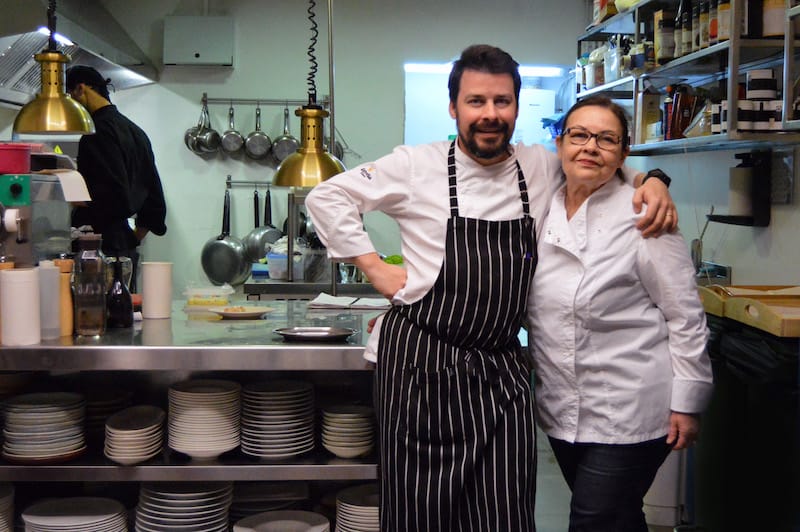
Sergi de Meiá
[Editor’s note: We regret to report that Sergi de Meiá has closed.]
Chef Sergi de Meiá and his mother Adelaida Castells are the perfect kitchen team. Together they transform the best Catalan products into creations that perfectly express the traditional in modern culinary terms. The restaurant’s impressive (and affordable) tasting menu takes you on a trip around Catalonia, from inland to the coast and delta of the Ebre river, using organic ingredients with the Slow Food stamp and a whole lot of talent.
When I visited, the tasting menu began with a spoon of squash cream with a tasty nutty Catalan picada, made of minced almonds and hazelnuts, and crowned with a flower. The next was one of my favorites, an evocative wonderful 19th-century dish created by Escoffier: A salad composed of a soft, juicy onion cooked for eight hours at a low temperature, some herbs and a bittersweet sauce of muscat vinegar and raisins. The vegetable ceviche featured mini local organic vegetables refreshed with a lemon touch. I arrived at the southern border of Catalonia with the all i pebre, “garlic and pepper,” a traditional fish casserole from the Delta de l’Ebre in northern Valencia and southern Catalonia, made with smoked eel chops in a delicious cream with caramelized pine nuts. The waves of the sea washed over my plate with an intense clam rice with caramelized cuttlefish. To finish, I climbed the mountains with traditional meatballs from Pobla del Segur with another picada of minced almonds and hazelnuts, St. George’s mushrooms from the Pyrenees and aromatic herbs, like rosemary. The trip ended with a selection of Catalan artisanal cheeses and a couple of lovely soft chickpea flour fritters with Catalan cream for dessert.
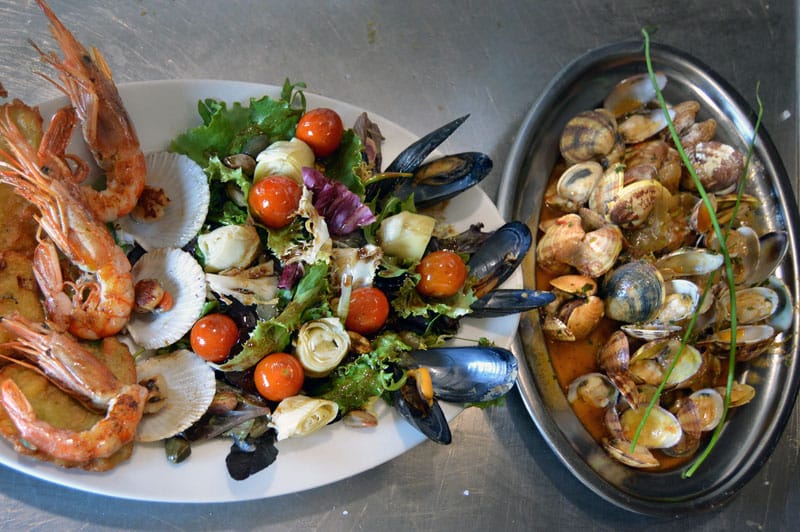
El Racó del Mariner (with new digs)
After being forced out of its original location at the old fishermen’s dock in La Barceloneta, this iconic restaurant opened again in the modern Port Fórum area. With a larger space and an even bigger kitchen, El Racó del Mariner has continued to draw in longtime customers with their excellent Mediterranean creations.
I’m in love with their tapas of fried fish and seafood: fresh local prawns, langoustines, clams, razor clams, squid, octopus, sardines and incredible anchovies caught by owner Jenifer Santana’s husband. But perhaps their most indispensable dishes are the generous seafood stews, soups and casseroles made with fresh lobster, monkfish or hake from the local fish markets. The best ingredients from the sea change depending on the season, and the day itself; one day it’s mantis shrimp for a luscious paella, the next it’s a wonderful sea hake casserole or some sea urchins with just a touch of lemon.
The only thing I miss is the restaurant’s proximity – gone are the days when I can spontaneously decide to stop by for a quick plate of seafood with a glass of beer. But the good news is that now when I do visit, I purposefully go hungry and turn it into a feast.
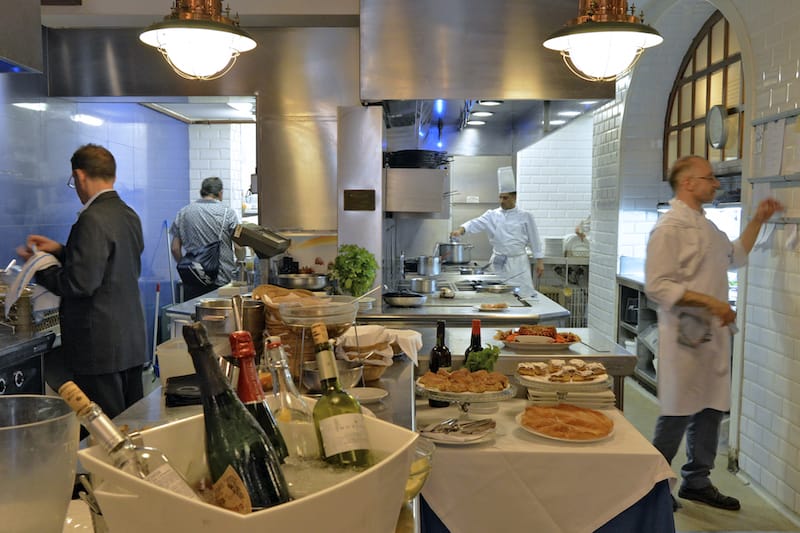
Carballeira
Opened by the Galician Millán family in the 1940s, Carballeira is an old classic with a renewed vigor. This white-tablecloth restaurant has excellent professional service, but a (surprisingly) casual atmosphere. You can choose fresh fish or seafood directly from the display case and then watch the kitchen team work their magic in the open kitchen.
The restaurant mixes traditional recipes with a few modern adaptations, all of which are made with high-quality products sourced from tried-and-true suppliers. I prefer their classics, like the hearty Galician caldo gallego, a comforting soup made with rapini, potatoes, chorizo and pork meat, their Betanzos omelet made with chorizo, or just some simply prepared percebes, barnacles that are oozing ocean essence. When paired with a glass of Albariño (white) wine, any of these dishes automatically improves my day. To finish, I always leave room for their classic dessert, the Galician oreja de fraile, a thin, delicate fried pastry made with lard and topped with anise liquor.
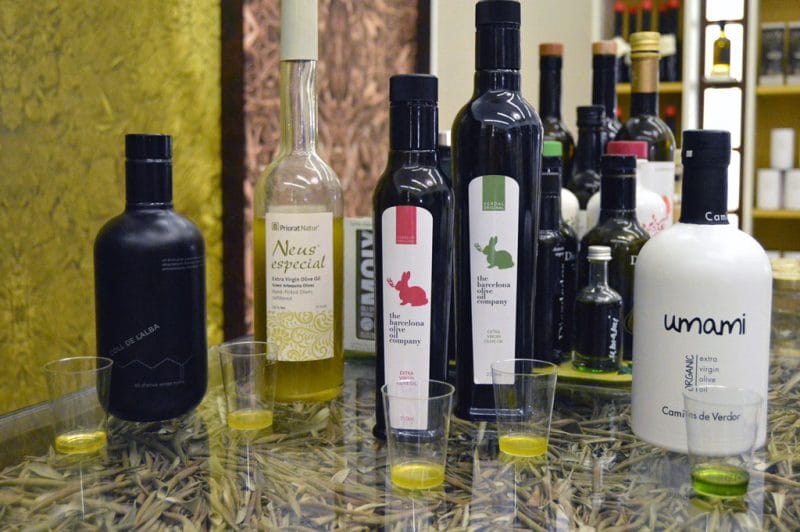
The Early/First Harvest of Spanish Extra-Virgin Olive Oil
This year I had the opportunity to taste a great variety of Spanish and Catalan extra-virgin olive oil in shops and at fairs and specialized events, which is how I discovered my preference for the spectacular and evocative aromatic cold-pressed oils that come from the early harvest.
The olives for early oil are harvested directly from the tree, before they fall. This harvest takes place in October, when the olives are still a bit green; at this magic moment, called envero, the olive is changing from its original green to purple, and the oil quantity and flavor richness is in perfect balance. These olives generally produce greener oils with live polyphenols, offering more intense, fresh, herbal and fruity aromas, some bitterness in the mouth and a very characteristic spicy touch. It is the perfect choice to enjoy raw, directly on bread or with vegetables, or to add flavor to cooked dishes. Early harvest extra-virgin olive oil has played a leading role in my kitchen all year.
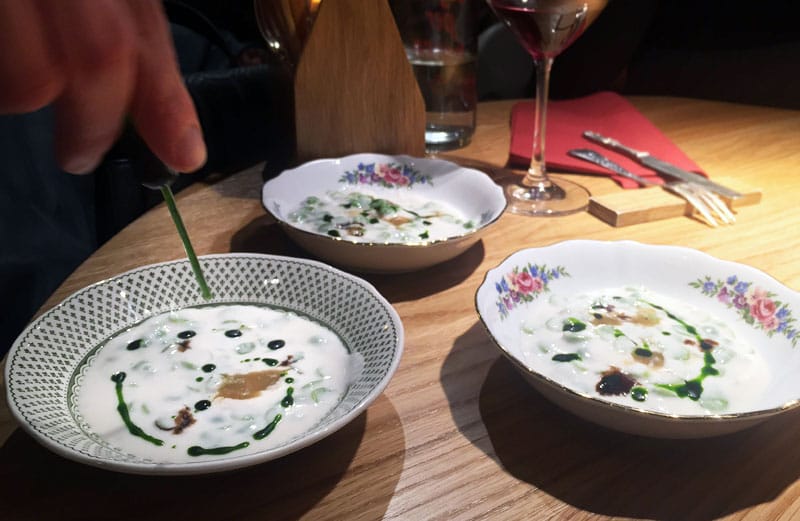
Dos Pebrots
Led by the former El Bulli chef Albert Raurich, this fascinating restaurant is a place where each recipe tells a story and speaks of a connection with the earth, the nation and its history. Having researched traditional Spanish cuisine, Raurich twists and reworks it in luscious modern creations that are always interesting and inspiring, like the spring peas with almond milk and fresh aromatic herbs, which pays homage to 17th-century Lenten food. I particularly loved the succulent sea urchins with ham and the simple yet wonderful oyster omelet, a dish that traces its roots to Roman times, when Barcelona was famous for its abundant fish stocks and oysters.
Published on December 19, 2017
Related stories
June 26, 2015
RioChat up the older residents of a Rio favela and you’re likely to start hearing romantic stories about Brazil’s northeast: those colorful cajú and mangaba fruit trees, the clear turquoise ocean, the folksy and upbeat forró music, chewy tapioca sandwiches and cakes. Brazilians call that saudades – a longing for something lost, which may or may not exist in the form one dreamily…
June 2, 2017
Elsewhere | By Tobias Mueller
ElsewhereWhat the taco stand is to Mexico City or the wok-wielding hawker to Bangkok, the Würstelstand is to Vienna. At any time of day or night, people line up to snack on a quick sausage, with a pickle, mustard and a can of beer. There is an astonishing variety of sausages to choose from –…
March 4, 2019
ShanghaiLegend has it that huangjiu, or yellow wine, was invented by Du Kang, the god of Chinese alcohol. Because huangjiu is fermented, the Traditional Chinese Medicine (TCM) benefits of the drink are legion, and include “invigorating the blood.” You can see for yourself if that’s the case on our Night Eats tour in Shanghai.







































